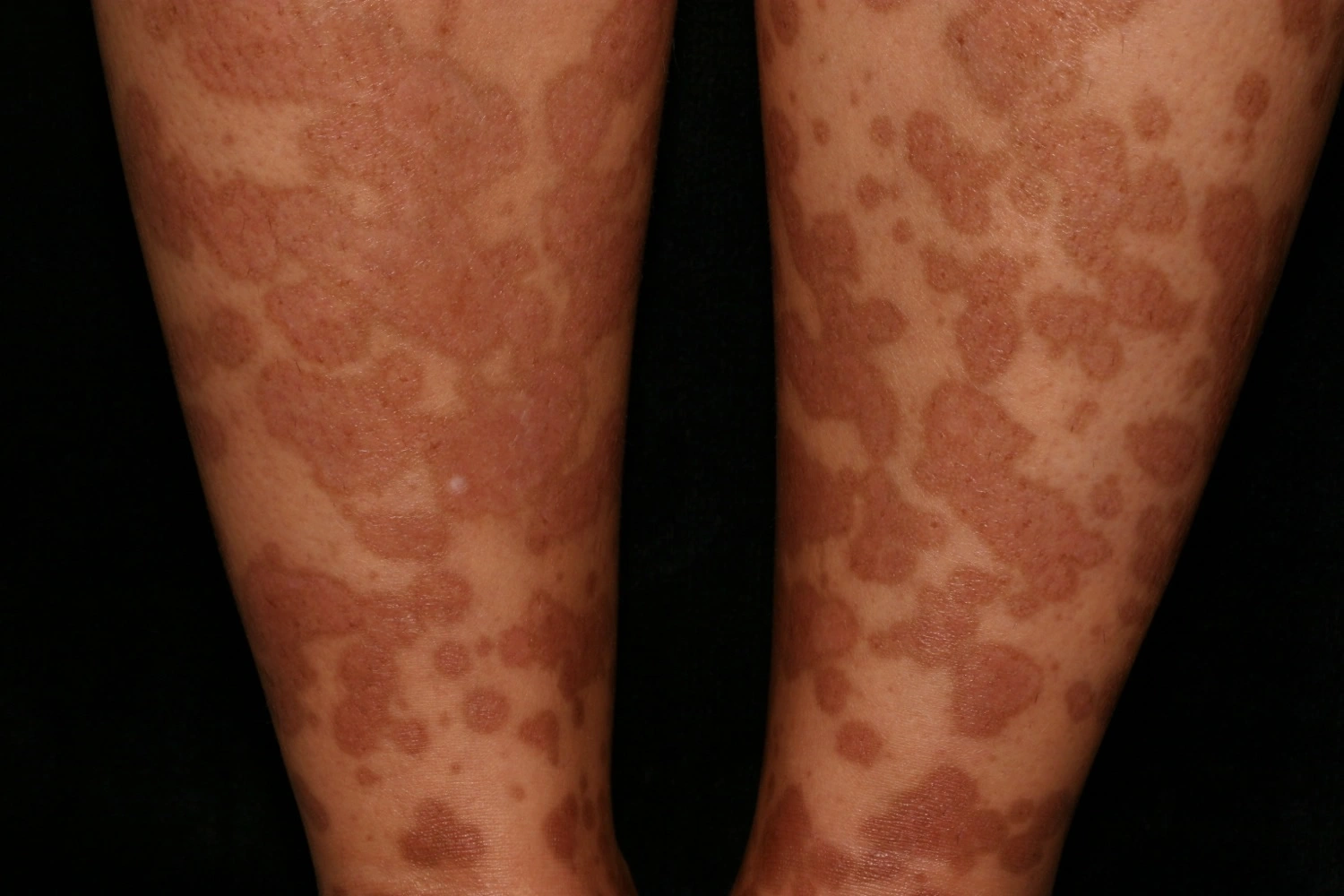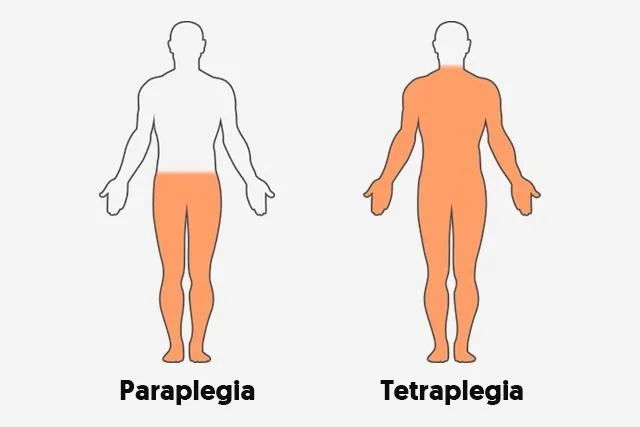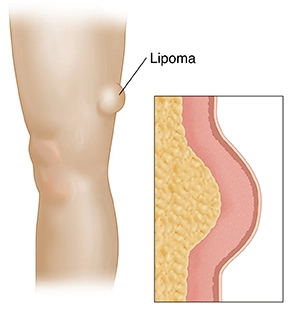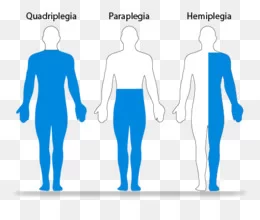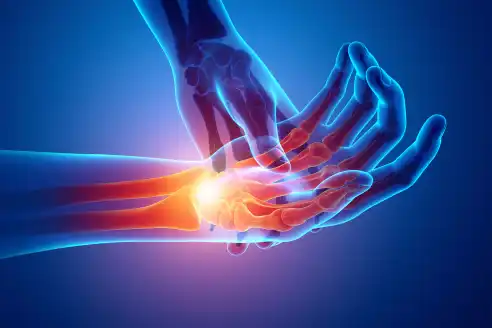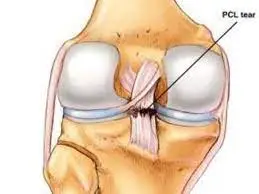Whipple’s disease
What is Whipple’s disease?
Whipple’s disease involves the small intestine’s capability to process fat and nutrients. It causes diarrhea and joint pain in the patient. The disease can also involve the nervous system, leading to seizures and memory issues. Tropheryma whipplei bacteria seen in soil and water lead to the disease.
Whipple disease interrupts normal digestion by impairing the cutdown of foods and hampering your body’s capability to absorb nutrients, like fats and carbohydrates. Whipple disease can also infect other organs, involving your heart, brain, and eyes. Without proper management, Whipple disease can be dangerous or fatal. However, a course of antibiotics can manage Whipple disease.
Symptoms
General signs and symptoms
Digestive signs and symptoms are common in Whipple disease and may involve:
- Diarrhea
- Stomach cramping and aches, which may aggravate after meals
- Weight loss, malabsorption of nutrients
Other frequent signs and symptoms associated with Whipple disease involve:
- Inflamed joints, specifically the ankles, knees, and wrists
- Fatigue
- Weakness
- Anemia
Less general signs and symptoms
In some cases, signs and symptoms of Whipple disease may involve:
- Fever
- Cough
- Enlarged lymph nodes
- Skin darkening in locations exposed to the sun and in scars
- Chest pain
Brain and nervous system (neurological) signs and symptoms may involve:
- Difficulty walking
- Vision problems, involving lack of control of eye motions
- Confusion
- Memory loss
- Symptoms tend to develop gently over many years in most patients with this disease. In a few people, symptoms like joint aches and weight loss evolve years before the digestive symptoms that lead to a diagnosis.
The following signs and symptoms don’t occur as often but can indicate that the condition is getting serious:
- skin discoloration
- inflamed lymph nodes
- a chronic cough
- the ache in the chest
- pericarditis, or swelling of the sac covering the heart
- heart failure
- a heart murmur
- poor vision
- dementia
- numbness
- insomnia
- muscle weakness
- tics
- trouble walking
- poor memory
Causes of Whipple’s Disease
Infection with the T. whipplei bacteria is the 1 and only well-known cause of Whipple’s. The bacteria will lead to the growth of internal sores and induce bodily tissues to thicken.
The villi are finger-like tissues that soak nutrients in the small intestine. When the villi start to thicken, their natural shape starts to change. This harmed the villi and prevents them from effectively soaking nutrients. This shows many of the symptoms of Whipple’s disease.
Differential Diagnosis
The differential diagnoses of Whipple disease involve:
- HIV
- Tuberculosis
- Inflammatory bowel disease with arthropathy
- Connective tissue disease
- Hyperthyroidism.
Diagnosing Whipple’s Disease
A diagnosis of Whipple’s disease is complicated, specifically because symptoms are similar to other more general conditions that criteria from celiac disease to neurological diseases. Your doctor or physician will try to rule out these other diseases before diagnosing you with Whipple’s disease.
Endoscopy
The first sign your doctor or physician will look for to examine if you have Whipple’s disease is lesions. An endoscopy is the insertion of a slim flexible tube to lower your throat to the small intestine. The tube has a mini camera connected. Your doctor or physician will observe the situation of your intestinal walls. Dense walls with creamy, rough covers are a potential sign of Whipple’s.
Biopsy
During an endoscopy, your doctor or physician may withdraw tissue from your intestinal walls to test for the presence of the T. whipplei bacteria. This method is known as a biopsy and can verify an infection.
Polymerase Chain Reaction
The polymerase chain reaction is a positively sensitive test that strengthens the DNA of the T. whipplei from your tissue collection. If the bacteria have been in your tissue, there will be DNA proof of it. This test can verify the presence of the T. whipplei bacteria in your tissue.
Blood Tests
Your doctor or physician might order a complete blood count. This will assist to examine if you have a low count of red blood cells RBC and low amounts of albumin, which are both signs of anemia. Anemia is a signal that you might have Whipple’s disease.
Treatment for Whipple’s Disease
Medication
An aggressive course of antibiotics is usually the first step in management, involving 2 weeks of antibiotics through an intravenous (IV). In extra, you’ll likely be on daily antibiotics for 1 to 2 years.
Other treatment options involve:
- ingesting proper amounts of fluids
- taking antimalarial drugs for 12 to 18 months
- using iron supplements to support anemia
- taking vitamin K, vitamin D, calcium, and magnesium supplements
- managing a high-calorie diet to assist with nutrient absorption
- taking corticosteroids to help decrease inflammation
- taking nonsteroidal pain medication, like ibuprofen
- Whipple’s disease is a bacterial infection that can lead to death if it’s not managed properly.
Physiotherapy Treatment
Physiotherapy treatment is not an important part of treatment but if muscle weakness is present generalized active exercise is initially useful and gradually strengthening exercise helps to improve the stamina of the body.
Gluteal/Buttock Set
Tightly squeeze the muscles in your bottom or glutei.
Hold for 10 seconds, and then relax and again do it.
Repeat 10 times in the proper manner. Do 2 sets each session, 2 to 3 times each day with rest.
Ankle Pumps
Move your ankle joint up and down as if you were pushing down or letting up on a gas pedal in a car.
Repeat 10 times on both sides.
Do 2 sets each session, 2 to 3 times each day with both sides.
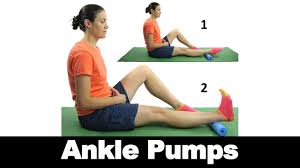
Upper Back and Shoulder Stretch
Raise your hands above your head and relax with your palms up.
Push your arms back into the bed or mat and hold for 5 to 10 seconds and slowly return to normal position.
Relax and repeat 3-5 times, 2 to 3 times each day for both sides.
Lie on your back in a supine position with your head supported and your knees flexed with your feet flat on the ground or mat.
Gradually lower one leg down toward the rug.
Make sure to hold your leg when you drop it down.
Get your leg back to the center.
Repeat 10 times with each leg. Do 2 sets each session, 2 to 3 times each day on both sides.

Hamstring Stretch
Sit at the front edge of a chair in a sitting position.
Place your leg out straight and keep your toes up.
Keep the knee of your other leg flexed.
Bend over your extended leg and bring it towards your toes.
Hold this stretch for thirty seconds and then relax.
Repeat with your opposite leg.
Do this exercise 1-2 times, 1 to 2 times each day with both sides.

Lumbar Spine Stretches
Lie on your back in the supine position.
Keep your knees towards your chest.
Rotate your knee joints towards one side.
Hold the position for twenty-thirty seconds and then relax. Repeat up to two-three times on each side, one – two times each day
Side-lying Position
Lie on your side in a side-lying position and face forward.
Have both arms straight in front and flex your knee joint.
Move your head as you move your top arm across your body as far as you can.
Get your arm in place and move your head back to the begging position.
See back again and bend your head farther if you can. Keep your head and arm back to the beginning position.
Rest and repeat 10 times on each side, 2 to 3 times each day.
Single Leg Stretch
Pull one knee into your chest. Extend the opposite leg. Hold for 15 seconds.
Repeat two times on each leg, one – two times each day

Double Leg Stretch
Pull both knee joints into your chest and hold for 15 seconds.
Repeat 2 times, 1 to 2 times each day with both knees.

Neutral Back with Marching
Lie flat on your back in a supine position with your knees flex.
Draw down your stomach towards your spine.
Slowly raise your legs, one at a time, towards your chest and then relax it.
Repeat 10 times with both legs, 3 times each week.
Bridging with Marching
Lie flat on your back in a supine position with your knees flex.
Draw down your stomach towards your spine.
Hold your stomach muscles tight and your shoulders on the ground. Raise your hips off the ground.
One leg gently raises towards your chest.
After then your leg is down to the ground.
Repeat 10 times with both legs, 3 times each week.

Curls with Therapy Ball
Lie flat on your back in a supine position with your leg straight and heels relaxing on the therapy ball.
Slowly flex your knee joints towards your chest, holding your feet on the ball and permitting the ball to roll.
Return to the beginning position.
Perform 2 sets of 10, 3 times each week in a proper manner
Pelvic Tilt
Lie on your back in a supine position with your knees flexed. Gently tilt your pelvis upwards and flatten your back into the bed or ground
Note: You should feel your abdominal muscles tighten a little
Rock back to your beginning position and repeat it. The goal for 5 repetitions, 2-3 times a day in the first few weeks
As you progress, permit your back to arch up some more and tighten your abdomen more strongly as you push your back into the ground. Makeup towards 20 repetitions.
Variation: Lie on your back in a supine position with your knees flexed. Slowly rock your pelvis upwards and flatten your back into the bed or ground. While taking deep breaths, hold this position for 15-30 seconds and then relax it.
Heel Slides
Lie down in a supine position on the ground or the bed with your legs flat. Slowly start to slide one heel toward your buttock, keeping your heel on the ground or the bed. Your knee will start to flex
Note: Continue to slide your heel and flex your knee joint until it becomes uncomfortable and you can sense a small amount of stress inside your knee joint
Maintain this position for about 5 seconds. Keep your heel back down until your leg is straight on the floor or bed. The goal for 5 repetitions before switching to the opposite side and doing it same

Knee Roll
Lie on your back in a supine position with your knee joints flexed and arms out to the sides. Maintain your knees and ankles together and slowly let your knees start to drop over to one side
Carefully tighten your abdominal muscles and roll your knee joints over to the other side. Try to maintain your shoulders down and your head relaxed, looking up with your both eyes.
The goal for 5 repetitions, 2-3 times a day in the first few weeks. As time goes on, you can increase the criteria, so your knee joints drop lower and build up to 20 repetitions
Hip Lift
Lie on your back in a supine position with your knee joints flexed. Very slowly tilt your pelvis backward side and tighten your pelvic floor muscles
Raise your buttock off the bed or the ground and gently lift up, vertebrae by vertebrae. Raise your buttock as high as you comfortably can
Maintaining this position for 5-10 seconds, taking deep breaths. Gently lower your spine and pelvis back down
The goal for 3-5 repetitions in beginning, building up to 10-15 repetitions in time and raising higher as you continue to progress in your recovery
Abdominal Hollowing
Kneel on all fours limbs on the bed or the ground, making your back straight
Inhale, and slowly tighten the muscles in the lower part of your abdomen without curving your back. Maintaining this position for 5 seconds and exhale slowly to relax the muscles and again repeat it
Abdominal Curl-Ups
Lie on your back in a supine position with your knee joints flexed and both feet planted on the ground or the bed. Maintaining your knees together, place your hand on each thigh
Raise your head and shoulders off the ground by sliding your hands along your thighs towards your knee joints. Once you’ve got a comfortable spot, maintain this position for 3-5 seconds
Gently lower your head and shoulders back to the ground. The goal for 5 repetitions for beginning, building up to 10-15 repetitions in time and expanding further as you continue to progress in your recovery

Surgery
Depending on your condition, your doctor or physician may talk with you about other pancreatic operations. Seek a second suggestion from a specialized surgeon if needed. Options involve:
- Surgery for tumors or diseases in the body and tail of the pancreas. Surgery to dismiss the left side (body and tail) of the pancreas is known as a distal pancreatectomy. With this method, your surgeon may also require you to remove your spleen.
- Surgery to remove the entire pancreas. This is known as a total pancreatectomy. You can survive relatively normally without a pancreas but will need lifelong insulin and enzyme alternatives.
- Surgery for tumors affecting nearby blood vessels. Numerous people are not considered eligible for the Whipple method or other pancreatic surgeries if their tumors include nearby blood vessels. At very few medical centers in the United States US, highly specialized and experienced surgeons or doctors will safely perform these operations on specific patients. The process includes also removing and reconstructing parts of blood vessels.
General diet recommendations after this surgery include:
- Eat 5-6 small, routine meals during the day to provide good nutrition
- Select foods high in protein and calories to assist in enhancing healing and maintaining weight
- Avoid large quantities of fluid with meals, as this may impact how much food you can eat. Small gulps with meals are okay.
- If you have bloating, gas, and/or diarrhea, pancreatic enzymes may be required to assist metabolize your food. A low-fat diet does not always solve the problems as it may already be hard to eat enough to keep weight after surgery. With the dismissal of part of the pancreas, pancreatic enzymes may be required to help with the soaking of carbohydrates, fat, and protein.
Complications
- The bordering of your small intestine has fine, hairlike projections (villi) that assist your body to soak nutrients.
- Whipple disease harms the villi, damaging nutrient absorption.
- Nutritional deficiencies are general in humans with Whipple disease and can lead to weight loss, weakness, fatigue, and joint ache.
- Whipple disease is a progressive and potentially fatal condition.
- Although the infection is uncommon, associated deaths continue to be registered.
- This is due in large part to late diagnoses and delayed management.
- Death frequently is caused by the spread of the infection to the central nervous system, which can cause irreversible harm.
Protecting against pathogens
The following are ways that you can protect yourself and others against pathogens include:
- Wash your hands frequently.
- Keep vaccinated and ensure vaccinations are up to date.
- Prepare, cook, and store meat and other foods mannerly.
- Stay home when you’re sick, particularly if you have a fever or diarrhea, or are vomiting.
- Don’t share personal things, like razors or toothbrushes.
- Don’t share drinking glasses or utensils.
- Defend against insect bites.
- Practice safe sex.
- Travel wisely by getting notified about health risks and special vaccinations.
Home Remedies for Whipple’s Disease
Let us look at a few of the home remedies for Whipple’s disease in detail below:
Iron Intake
Since Whipple’s disease inhibits your body’s capability to soak nutrients properly, it is important to supplement it with minerals, such as iron. You will be incapable of properly digesting iron, resulting in anemia and a low red blood cell RBC count, which means you lose energy, and sorrow from headaches, and general fatigue. Therefore, extra foods such as eggs, red meat, dried fruit, green leafy vegetables, mollusks, liver, lentils, artichokes, beans, and turkey to your diet.
Fruits and Vegetables
Fruits and vegetables are frequently the best sources of packed nutrients, and they also give fiber, which assists to the digestive processes within the body. Since Whipple’s disease involves the gastrointestinal system to such a high degree, any possible boost to the digestive process is a good thing. You may not fully soak the helpful nutrients in fruits and vegetables, but whatever your body is able to soak will be helpful. Furthermore, a shortage of fruits and vegetables results in scurvy, which is a common problem associated with Whipple’s disease.
High-protein Diet
Since Whipple’s disease involves different parts of the body and a number of the body’s processes, it is important to reload the reserves of material to create new muscle mass, cells, blood vessels, etc. Proteins are the building blocks of our body and play an important part in healing, as well as growth. By increasing the quantity of protein we intake while suffering from Whipple’s disease, it is possible to stave off some of the more injured symptoms and side effects of malabsorption. Some of the good protein-rich foods to eat are tuna, turkey, salmon, pork loin, cheese, tofu, eggs, beans, yogurt, nuts, milk, and seeds.
Avoid High-fat Foods
A harmful diet of fatty, greasy foods can cause the symptoms of Whipple’s disease even aggravate because they contribute to a weaker cardiovascular system, slow down your metabolic procedures, and can contribute to many other fitness problems that will further weaken your overall system. Therefore, maintaining an all-around healthy diet is a good way to improve your quality of life if you are suffering from Whipple’s disease.
Calcium and Magnesium
Intake of foods that are wealthy in calcium and magnesium can assist in enhancing your gastrointestinal system, along with many other parts of human fitness. These are also two of the most essential minerals that aren’t capable to be soaked by the body when suffering from Whipple’s disease. Without these 2 minerals, your bone mineral density will drop, and the weakness already associated with the disorder will be aggravated. Calcium-rich foods involve yogurt, milk, nuts, cheese, and different vegetables like broccoli and kale. Magnesium-rich foods involve mackerel, spinach, rice, soybeans, avocados, and bananas.
Vitamin Supplements
Whipple’s disease does not permit the body to soak important vitamins so it is important to use vitamin supplements to maintain your levels healthy and normal. These sorts of vitamins can be seen in foods if you particularly pay attention to which vitamins you require, but it is also easy to obtain vitamin supplements in organic food stores.
FAQ
What will happen if Whipple’s disease will not be treated?
Untreated Whipple’s disease can get more harm and cause death. Malabsorption is done when your body can’t process fat or other nutrients. As a result, your body loses nutrients and vitamins.
When should you suspect Whipple disease?
Whipple disease should be researched in middle-aged white men who have arthritis and abdominal ache, weight loss, diarrhea, or other symptoms of malabsorption. For such patients who have upper endoscopy with small-bowel biopsy; the intestinal damage is particular and diagnostic.
How long do most people live after Whipple surgery?
A Whipple process increases your chances of long-term living with pancreatic cancer. Unfortunately, very few humans live with pancreatic cancer. Only about 8.5% of humans with pancreatic cancer survive for five years. If you have the Whipple process, your possibilities increase to 25%.
What is recovery from Whipple like?
Complete healing from the Whipple procedure can take up to 2 months. But in a few cases, it can take up to 6 months to heal. Patients are usually required to take a routine vitamin with iron and daily drugs to decrease stomach acid. Some patients temporarily have problems maintaining their blood sugar levels.
Do you need insulin after a Whipple?
Your pancreas makes insulin and maintains your blood sugar. Since part or all of your pancreas is dismissed during the Whipple procedure, there is a possibility that you may evolve diabetes. Patients who have diabetes before surgery will require to adjust their diabetes drugs after surgery.

